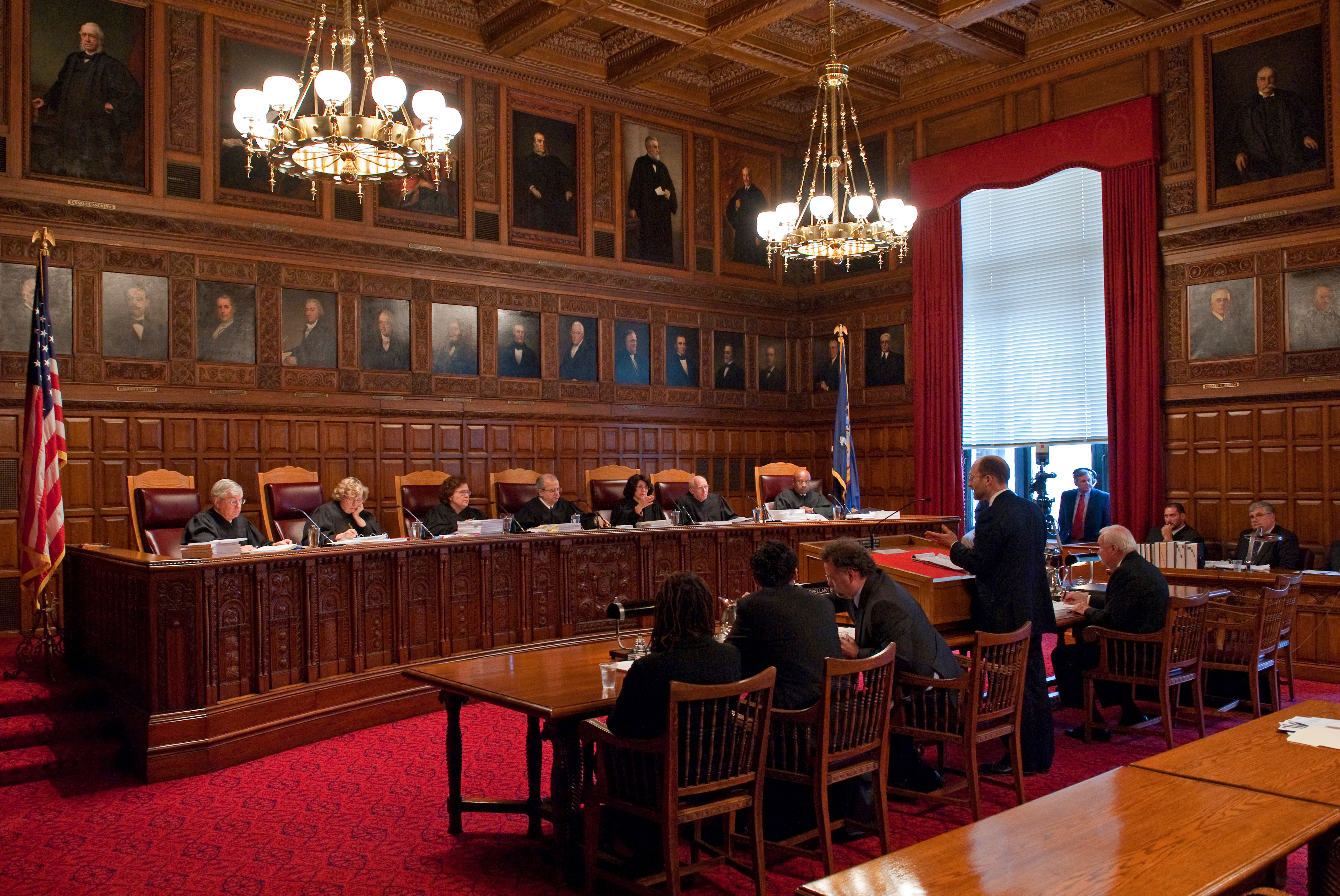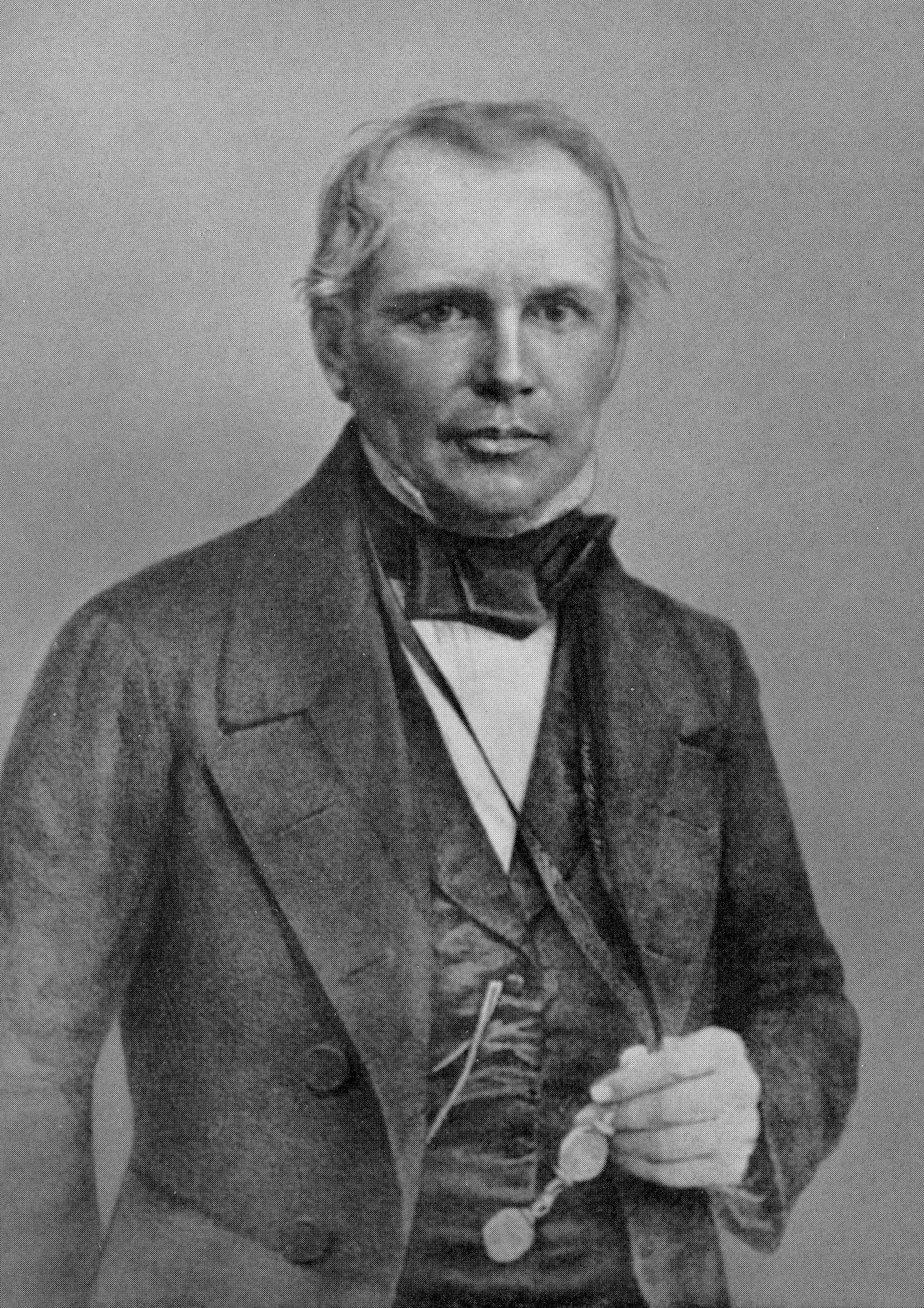|
Sir Hector Langevin
Sir Hector-Louis Langevin, (August 25, 1826 – June 11, 1906) was a Canadian lawyer, politician, and one of the Fathers of Confederation. Early life and education Langevin was born in Quebec City in 1826. He studied law and was called to the bar in 1850. Political career In 1856, he was elected to the municipal council of Quebec City and was mayor from 1858 to 1861. In 1857, he was elected Member of Parliament for Dorchester in the Legislative Assembly of the Province of Canada as a member of the Conservative Party. He held various positions in Cabinet, including Solicitor General (1864–66), Postmaster General (1866–67), Secretary of State for Canada (1867–69), Superintendent-General of Indian Affairs (1868–69), Minister of Public Works (1869–73) and acting Minister of Militia and Defence (1873). Langevin also attended all three conferences leading to Confederation. He left politics in 1873 due to his role in the Pacific Scandal. In 1871 he was elected ... [...More Info...] [...Related Items...] OR: [Wikipedia] [Google] [Baidu] |
The Honourable
''The Honourable'' (British English) or ''The Honorable'' (American English; see spelling differences) (abbreviation: ''Hon.'', ''Hon'ble'', or variations) is an honorific style that is used as a prefix before the names or titles of certain people, usually with official governmental or diplomatic positions. Use by governments International diplomacy In international diplomatic relations, representatives of foreign states are often styled as ''The Honourable''. Deputy chiefs of mission, , consuls-general and consuls are always given the style. All heads of consular posts, whether they are honorary or career postholders, are accorded the style according to the State Department of the United States. However, the style ''Excellency'' instead of ''The Honourable'' is used for ambassadors and high commissioners. Africa The Congo In the Democratic Republic of the Congo, the prefix 'Honourable' or 'Hon.' is used for members of both chambers of the Parliament of the Democratic Repu ... [...More Info...] [...Related Items...] OR: [Wikipedia] [Google] [Baidu] |
Lawyer
A lawyer is a person who practices law. The role of a lawyer varies greatly across different legal jurisdictions. A lawyer can be classified as an advocate, attorney, barrister, canon lawyer, civil law notary, counsel, counselor, solicitor, legal executive, or public servant — with each role having different functions and privileges. Working as a lawyer generally involves the practical application of abstract legal theories and knowledge to solve specific problems. Some lawyers also work primarily in advancing the interests of the law and legal profession. Terminology Different legal jurisdictions have different requirements in the determination of who is recognized as being a lawyer. As a result, the meaning of the term "lawyer" may vary from place to place. Some jurisdictions have two types of lawyers, barrister and solicitors, while others fuse the two. A barrister (also known as an advocate or counselor in some jurisdictions) is a lawyer who typically specia ... [...More Info...] [...Related Items...] OR: [Wikipedia] [Google] [Baidu] |
1871 Quebec General Election
The 1871 Quebec general election was held in June and July 1871 to elect members of the Second Legislature for the Province of Quebec, Canada. The Quebec Conservative Party, led by Premier Pierre-Joseph-Olivier Chauveau, was re-elected, defeating the Quebec Liberal Party, led by Henri-Gustave Joly de Lotbinière. Franchise and candidacy Right to vote The right to vote in elections to the Legislative Assembly was not universal. Only male British subjects (by birth or naturalisation), aged 21 and older, were eligible to vote, and only if they met a property qualification. For residents of cities and towns, the qualification was being the owner, tenant or occupant of real property assessed at three hundred dollars, or at an assessed yearly value of thirty dollars. For residents of townships and parishes, the requirements were either an assessment of two hundred dollars, or an assessed yearly value of twenty dollars. Women were expressly prohibited from voting, "for any E ... [...More Info...] [...Related Items...] OR: [Wikipedia] [Google] [Baidu] |
Pacific Scandal
The Pacific Scandal was a political scandal in Canada involving bribes being accepted by 150 members of the Conservative government in the attempts of private interests to influence the bidding for a national rail contract. As part of British Columbia's 1871 agreement to join the Canadian Confederation, the government had agreed to build a transcontinental railway linking the Pacific Province to the eastern provinces. The scandal led to the resignation of Canada's first Prime Minister, John A. Macdonald and a transfer of power from his Conservative government to a Liberal government, led by Alexander Mackenzie. One of the new government's first measures was to introduce secret ballots in an effort to improve the integrity of future elections. After the scandal broke, the railway plan collapsed, and the proposed line was not built. An entirely different operation later built the Canadian Pacific Railway to the Pacific. Background For a young and loosely-defined nation, the build ... [...More Info...] [...Related Items...] OR: [Wikipedia] [Google] [Baidu] |
Canadian Confederation
Canadian Confederation (french: Confédération canadienne, link=no) was the process by which three British North American provinces, the Province of Canada, Nova Scotia, and New Brunswick, were united into one federation called the Canada, Dominion of Canada, on July 1, 1867. Upon Confederation, Canada consisted of four provinces: Ontario and Quebec, which had been split out from the Province of Canada, and the provinces of Nova Scotia and New Brunswick. Over the years since Confederation, Canada has seen numerous territorial changes and expansions, resulting in the current number of Provinces and territories of Canada, ten provinces and three territories. Terminology Canada is a federation and not a confederate association of sovereign states, which is what "confederation" means in contemporary political theory. It is nevertheless often considered to be among the world's more decentralization, decentralized federations. The use of the term ''confederation'' arose in the Provin ... [...More Info...] [...Related Items...] OR: [Wikipedia] [Google] [Baidu] |
Minister Of Militia And Defence
The Minister of Militia and Defence was the federal government minister in charge of the volunteer army units in Canada, the Canadian Militia. From 1855 to 1906, the minister was responsible for Canadian militia units only, as the British Army was still stationed in Canada. From 1906 to 1923, the minister was in charge of the Department of Militia and Defence (Canada). After 1923, the position was merged with the Minister of the Naval Service and the Minister of Aviation into the new position of Minister of National Defence. The Minister of National Defence became responsible for the Canadian Militia, the Royal Canadian Navy and, from 1924, the Royal Canadian Air Force. List of Ministers Pre-Confederation (1855–1867) The following individuals were named the Minister of Militia and Defence for the Province of Canada. Key: Post-Confederation (1867–1922) The following individuals were named the Minister of Militia and Defence for Canada. Key: Ministers with mili ... [...More Info...] [...Related Items...] OR: [Wikipedia] [Google] [Baidu] |
Minister Of Public Works (Canada)
The Minister of Public Works was a position in the Cabinet of Canada who oversaw the public works portfolio of the federal government. The office was established upon Confederation (1 July 1867) by Order-in-Council, and was given statutory basis later that year on December 21, through Statute 31 Victoria, c. 12. On 12 July 1996, as part of substantial governmental reorganization under the leadership of Jean Chrétien, the position was merged with that of the Minister of Supply and Services to create the office of Minister of Public Works and Government Services The minister of public services and procurement (french: ministre des services publics et de l’approvisionnement) is the minister of the Crown in the Canadian Cabinet who is responsible for overseeing the Government of Canada's "common service .... Ministers References Public Works (Canada) Former Canadian ministers Public Works (Canada) {{Canada-gov-stub ... [...More Info...] [...Related Items...] OR: [Wikipedia] [Google] [Baidu] |
Canadian Cabinet
The Cabinet of Canada (french: Cabinet du Canada) is a body of ministers of the Crown that, along with the Canadian monarch, and within the tenets of the Westminster system, forms the government of Canada. Chaired by the prime minister, the Cabinet is a committee of the King's Privy Council for Canada and the senior echelon of the Ministry, the membership of the Cabinet and ministry often being co-terminal; there were no members of the latter who were not also members of the former. For practical reasons, the Cabinet is informally referred to either in relation to the prime minister in charge of it or the number of ministries since Confederation. The current cabinet is the Cabinet of Justin Trudeau, which is part of the 29th Ministry. The interchangeable use of the terms ''cabinet'' and '' ministry'' is a subtle inaccuracy that can cause confusion. Composition King-in-Council The Government of Canada, formally referred to as ''His Majesty's Government'', is defined by the ... [...More Info...] [...Related Items...] OR: [Wikipedia] [Google] [Baidu] |
Progressive Conservative Party Of Canada
The Progressive Conservative Party of Canada (PC; french: Parti progressiste-conservateur du Canada) was a centre-right federal political party in Canada that existed from 1942 to 2003. From Canadian Confederation in 1867 until 1942, the original Conservative Party of Canada participated in numerous governments and had multiple names. In 1942, its name was changed to the Progressive Conservative Party under the request of Manitoba Progressive Premier John Bracken. In the 1957 federal election, John Diefenbaker carried the Tories to their first victory in 27 years. The year after, he carried the PCs to the largest federal electoral landslide in history (in terms of proportion of seats). During his tenure, human rights initiatives were achieved, most notably the Bill of Rights. In the 1963 federal election, the PCs lost power. The PCs would not gain power again until 1979, when Joe Clark led the party to a minority government victory. However, the party lost power only ... [...More Info...] [...Related Items...] OR: [Wikipedia] [Google] [Baidu] |
Legislative Assembly Of The Province Of Canada
The Legislative Assembly of the Province of Canada was the lower house of the legislature for the Province of Canada, which consisted of the former provinces of Lower Canada, then known as Canada East and later the province of Quebec, and Upper Canada, then known as Canada West and later the province of Ontario. It was created by The Union Act of 1840. Canada East and Canada West each elected 42 members to the assembly. The upper house of the legislature was called the Legislative Council. The first session of parliament began in Kingston in Canada West in 1841. The second parliament and the first sessions of the third parliament were held in Montreal. On April 25, 1849, rioters protesting the Rebellion Losses Bill burned the parliament buildings. The remaining sessions of the third parliament were held in Toronto. Subsequent parliaments were held in Quebec City and Toronto, except for the last session June-August 1866 of the eighth and final parliament, which was held in the ... [...More Info...] [...Related Items...] OR: [Wikipedia] [Google] [Baidu] |
Dorchester (electoral District)
Dorchester was a federal electoral district in Quebec, Canada, that was represented in the House of Commons of Canada from 1867 to 1968. It was created by the ''British North America Act'', 1867, which preserved the existing electoral districts in Lower Canada at the time. In 1966, it was redistributed into the Beauce, Bellechasse and Lévis electoral districts. Members of Parliament This riding elected the following Members of Parliament: Election results See also * List of Canadian federal electoral districts * Historical federal electoral districts of Canada External linksRiding history from theLibrary of Parliament The Library of Parliament (french: Bibliothèque du Parlement) is the main information repository and research resource for the Parliament of Canada. The main branch of the library sits at the rear of the Centre Block on Parliament Hill in Otta ... {{coord , 46.75, N, 7 ... [...More Info...] [...Related Items...] OR: [Wikipedia] [Google] [Baidu] |




